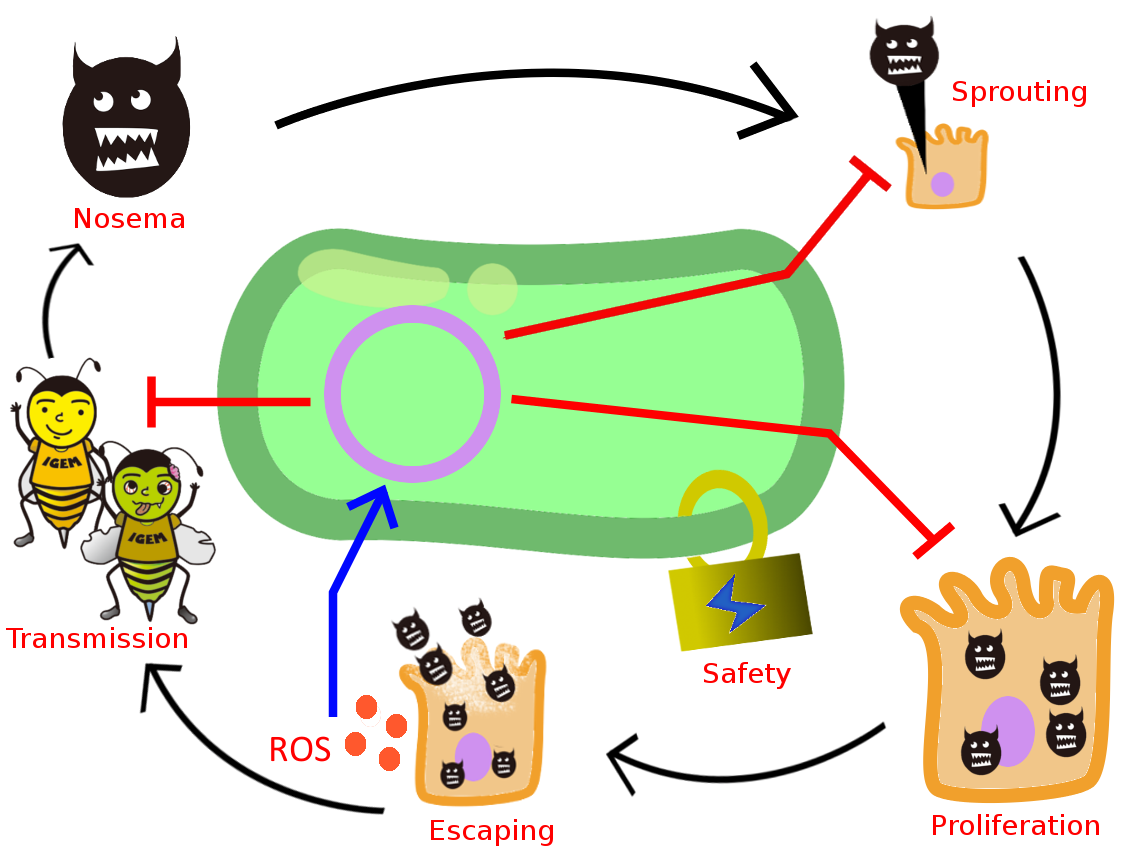Team:NYMU-Taipei
From 2013.igem.org
| Line 9: | Line 9: | ||
[[File:NYMU_project_overview.jpg]] | [[File:NYMU_project_overview.jpg]] | ||
| - | ==List of Our Accomplishments== | + | ==List of Our Experimental Accomplishments== |
[https://2013.igem.org/Team:NYMU-Taipei/Experiment/Wet_Lab 1. We have documented and sent 23 new BioBricks to part registry.] | [https://2013.igem.org/Team:NYMU-Taipei/Experiment/Wet_Lab 1. We have documented and sent 23 new BioBricks to part registry.] | ||
Revision as of 03:39, 28 September 2013

Taipei, Taiwan


Overview of 2013 NYMU iGEM Team Project
To save bees from Nosema ceranae infection, the culprit of colony collapse disorder (CCD), NYMU-Taipei iGEM team has created the so-called Bee. coli from Escherichia coli MG1655, which naturally resides in bees. The Bee. coli is designed to work successively as follows: (1) Bee. coli continuously secretes mannosidase to inhibit the sprouting of N. ceranae spores. (2) if the bee is infected with N. ceranae, the fungus-killing-circuit with a positive feedback design will be turned on to wipe out N. ceranae. (3) if these designer weapons should fail to conquer N. ceranae, a bee-suicide-operon will be activated to kill the infected bees but save their companions.
Besides, a light-inducible lysis system is created to ensure our Bee. coil only lives inside of the bee. In addition, we have used encapsulation as the method to send our Bee. coli into the bee. Since the capsule will only dissolve in a bee’s gut, our Bee. coli will not wantonly spread out.
List of Our Experimental Accomplishments
1. We have documented and sent 23 new BioBricks to part registry.
 "
"




















